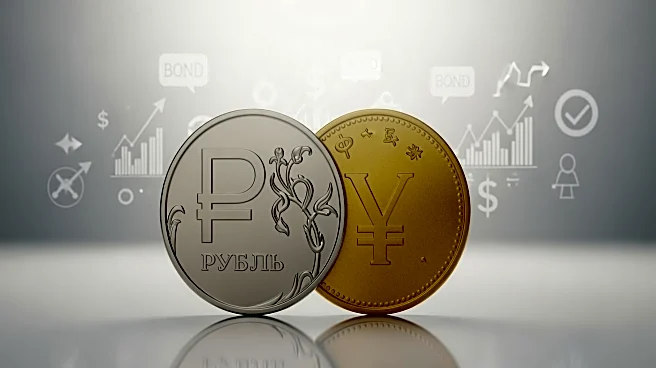What's Happening?
Russia is set to issue its first yuan-denominated domestic government bonds on December 8, as announced by the Russian Finance Ministry. The bonds, with maturities ranging from three to seven years, will be organized by Russian banks Gazprombank, Sberbank,
and VTB Capital. This move is aimed at utilizing the yuan liquidity accumulated from Russian energy sales to China, offering an investment option for these funds. The issuance will occur on the Moscow Stock Exchange, which is currently under Western sanctions, limiting access for foreign investors, including those from China and other Asian countries. The planned issuance volume is up to 400 billion roubles ($5 billion), with final amounts to be determined after books close on December 2.
Why It's Important?
The issuance of yuan-denominated bonds by Russia signifies a strategic shift in its financial operations, aiming to strengthen economic ties with China amidst Western sanctions. This move could potentially reduce Russia's reliance on Western financial systems and currencies, thereby mitigating the impact of sanctions. For China, this development enhances its influence in global financial markets, as the yuan becomes more integrated into international trade and finance. The exclusion of foreign investors from these bonds highlights the geopolitical tensions and the ongoing economic decoupling between Russia and Western nations.
What's Next?
The issuance of these bonds may lead to further financial collaboration between Russia and China, potentially paving the way for more yuan-based transactions in bilateral trade. This could also encourage other countries facing Western sanctions to explore similar financial strategies. The success of this bond issuance might prompt Russia to consider additional yuan-denominated financial instruments, further solidifying its economic partnership with China.
Beyond the Headlines
This development could have long-term implications for global financial markets, as it challenges the dominance of Western currencies and financial institutions. The move may also influence other countries to diversify their currency reserves and explore alternative financial systems, potentially leading to a more multipolar financial world.















